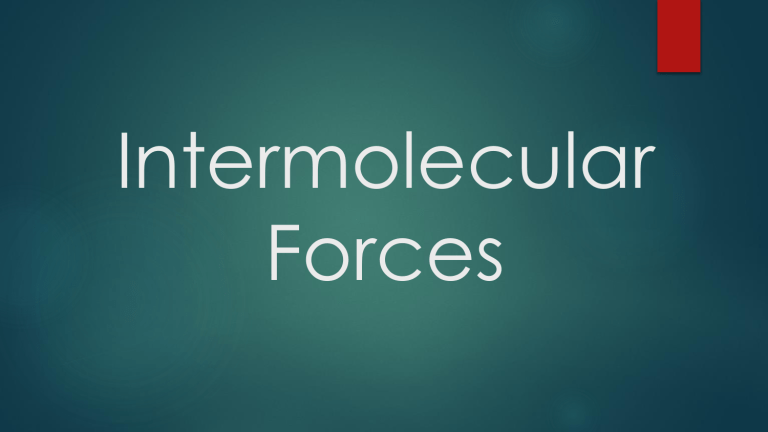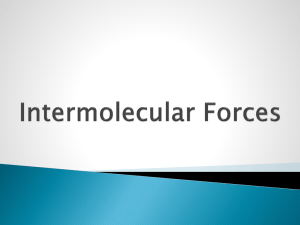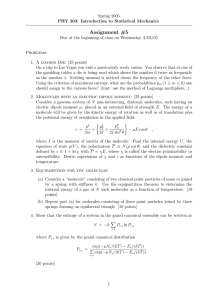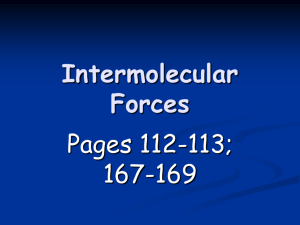
Intermolecular Forces Intermolecular Forces Forces that exist in a collection of molecules. In the gaseous state, these forces are negligible. The gaseous molecules do not interact with each other. van der Waals Forces The forces of interaction between molecules. In liquids and solids, the molecules interact and have a great influence on one another. Johannes van der Waals (1837-1923) A Dutch physicist, while working on the theory of ideal gases, recognized the existence of some type of weak force on particles that are very close to each other. Classification of van der Waals Forces Dipole-dipole In the solid and liquid state, the molecules align themselves where the positive end of one dipole is directed toward the negative end of the neighboring dipole. The presence of dipole-dipole interaction explains the higher boiling point of a polar molecule than a nonpolar molecule of the same molecular weight. Instantaneous-induced dipole or London Forces This type of interaction exists in a nonpolar species. If at a particular instance an event occurs that causes a distortion of the electron cloud, a normally nonpolar species becomes an instantaneous dipole. Following this, a neighboring non-polar molecule is induced to become a dipole. Fritz London (1900-1954) A German physicist, offered a theoretical explanation on this type of intermolecular force. He also devised the first quantum mechanical treatment of the hydrogen molecule. A nonpolar species A nonpolar species becomes an instantaneous dipole due to the distortion of the electron cloud A nonpolar molecule induced to become a dipole is called induced dipole Hydrogen Bond A hydrogen bond occurs only under special circumstances, that is, if hydrogen is bonded to highly electronegative atoms such as nitrogen, oxygen, and fluorine. It is a strong intermolecular force. Identify what type of van der Waals Forces exist in the following molecules. 1. 2. 3. 4. 5. FeO BF3 N2 NH3 CO2






